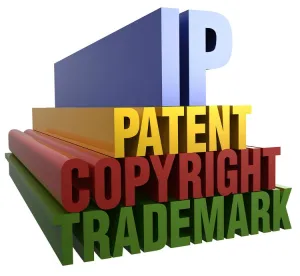Supreme Court on October 3, 2016, denied certiorari in a number of patent cases, including four cases concerning subject matter eligibility in the wake of the Mayo and Alice decisions. The Mayo decision essentially held that because laws of nature are not patentable, processes reciting such laws are not patentable unless they include additional features to ensure the patent will not monopolize natural phenomena. The Alice decision essentially held that abstract ideas implemented using a computer without additional significant elements are not patent eligible. As a result of these decisions, a two-part test has emerged that generally includes the following: (1) determining whether the patent claim under examination contains an abstract idea, such as an algorithm, method of computation, or other general principle; and, if so, (2) determining whether the patent embodies an inventive concept that amounts to significantly more than the abstract idea, thereby amounting to patent eligible subject matter. Three of the four eligibility cases up for consideration (Genetic Tech, Jericho, and Essociate) looked to challenge the Federal Circuit’s affirmation of invalidity, and the fourth case up for consideration (Trading Technologies) looked to challenge the Patent Trial and Appeal Board’s repeated institution of covered business method review of graphical user interface patents.
The Cases at Issue
Genetic Tech concerns U.S. Patent No. 5,612,179 (the “‘179 Patent”) directed to a method for amplifying DNA segments containing a non-coding region associated with a gene and then checking the sequence of the associated coding section (the gene) that is incidentally amplified to look for alleles of a known gene. The Petitioner argued that the method is more reliable and quicker than prior art identification processes that are used to direct identification of allelic variants. On appeal, the Federal Circuit affirmed the lower court finding of invalidity – holding that the relationship between coding and non-coding was a naturally occurring phenomenon and that the additional laboratory techniques were used in a routine and conventional manner known at the time. The Petitioner suggested that the Federal Circuit used an “overly expansive” definition of what constitutes a patent ineligible concept in invalidating the ‘179 patent, and urged the Supreme Court to take on the case in view of a split among Federal Circuit Judges about how to properly define a patent-ineligible concept and how to apply the framework of the Mayo and Alice decisions.
Jericho concerns U.S. Patent No. 8,560,836 directed to a rules based method for authenticating user requests to access resources. On appeal, the Federal Circuit affirmed the lower court finding of invalidity in which the lower court suggested that the claims are directed to the abstract concept that “people who meet certain requirements are allowed to do certain things.” The Petitioner argued that the Federal Circuit’s one word opinion affirming the invalidity of the patent failed to consider that the invention improved existing processes and provided increased security, and failed to address preemption, saying that “patents are routinely invalidated under [Section 101] that do not preempt other uses of the abstract idea.”
Essociate concerns U.S. Patent No. 6,804,660 directed to using identifiers to identify and track the source of network transactions. On appeal, the Federal Circuit affirmed the lower court finding of invalidity in which the lower court suggested that the claims are directed to the abstract idea of keeping track of which customers come from various referrers, and that it is a fundamental practice to keep track of who is directing customers to one’s business and compensate or provide incentives to that referring source to ensure the continuing flow of customers from that source. The Petitioner suggested that the courts have had trouble understanding the Mayo/Alice two-step test, and that the application of the test has been inconsistent and largely in favor of defendants (i.e., finding invalidity) for inventions that involve a computer in any regard.
Trading Technologies concerns U.S. Patent No. 6,766,304 directed to display of market information relating to trading of a commodity traded in an electronic exchange, including, in response to a selection of a portion of the information displayed, setting parameters for a trade order and sending the trade order. The Petitioner argued that the Patent Trial and Appeal Board exceeded its jurisdiction by repeatedly instituting covered business method reviews of graphical user interface patents and that the Federal Circuit incorrectly refused to grant mandamus to cure the jurisdictional overreach. The Petitioner also argued that Congress, when promulgated the America Invents Act, expressly identified graphical user interface tools for use in the field of electronic trading as exemplary technology outside the scope of Covered Business Method (CBM) review.
The Takeaways
Despite Patentee frustrations with the application of the Mayo/Alice framework, the Supreme Court appears to be content with the Federal Circuit’s and the Patent Trial and Appeal Board’s application of the framework, and does not feel an urgent need to step-in and provide additional guidance regarding how the Mayo/Alice framework should be applied. As a result, patent owners and practitioners should not expect any explicit guidance from the Supreme Court in the near future, and will need to continue to assess their technologies and patents based on case-by-case applications of the framework by the Federal Circuit and the Patent Trial and Appeal Board. For example, the above decisions may indicate the following: (1) a novel method involving laboratory techniques used in a routine and conventional manner (even if providing a more reliable and quicker method than the prior art) may not provide sufficiently more than an abstract idea; (2) rules-based assessments on a computer may not provide sufficiently more than an abstract idea; (3) computer-implemented tracking of network-based referrals may not provide sufficiently more than an abstract idea; and (4) graphical user interface tools may not be outside the scope of CBM review and may not provide sufficiently more than an abstract idea. Patent owners and practitioners will also need to closely assess the subject matter eligibility of claims in their existing patents, in light of the application of the Mayo/Alice framework, to determine whether these patents are now more susceptible to post-grant review and CBM review.




 />i
/>i

